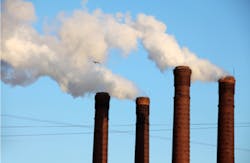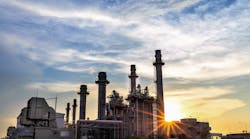Over the next 10 years operators of coal-fired power plants will spend $80 billion to upgrade their existing facilities, according to a prediction from the McIlvaine Company in the new report Fossil & Nuclear Power Generation: World Analysis & Forecast.
McIlvaine says the U.S. upgrade market will be driven by the following factors:
- Coal will again become the low-cost power option
- Building new coal-fired power plants will be difficult
- Automation will reduce operating costs
- Environmental rules will require more air pollution control
- Water quality issues will require cooling and treatment investments.
Estimates range from 200,000 MW to 250,000 MW of coal-fired capacity remaining in place as opposed to the 300,000 MW in place in 2005. A conservative estimate is for 200,000 MW of capacity to spend a minimum of $400/kW for upgrades. This is only 15 percent of the cost of a new coal-fired power plant and will therefore be an attractive option, McIlvaine says.
Coal will become the low-cost alternative because gas prices in the U.S. will rise to international levels, which in turn will be set by the price of oil. If the extraction cost of gas remains low, it will be converted to LNG or liquids, so low-cost gas for power generation is temporary.
McIlvaine says the U.S. will remain the only country that will regulate to prevent new clean coal-fired power plants while continuing to operate older power plants, meaning there will be a big investment in old power plants.
Operators will be motivated to cut operating costs, including the amount of coal consumed per unit of power produced. Optimization, automation and the most modern digital control systems will provide not only increased energy efficiency, but also reduced labor costs and many other enterprise management benefits.
Upgrades to decrease air emissions will continue, driven by a series of regulations. Over the next 10 years, older power plants will find themselves subject to the same stringency level as new power plants. Most power plants will make a series of investments over this period. Some will be obsolesced by the next stringency level. This will raise the total cost of compliance.
Older power plants with ponds will be forced to invest in technologies resulting in dry-solid wastes. Those with once-through cooling will be required to invest in cooling towers and recirculation systems.
For more information on Fossil & Nuclear Power Generation: World Analysis & Forecast, click here.


